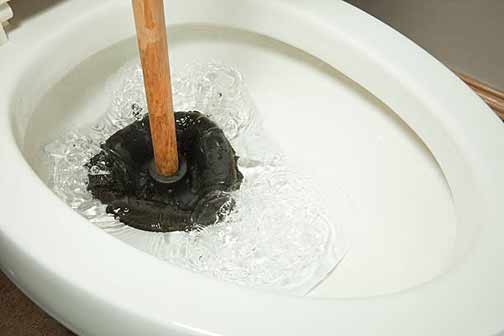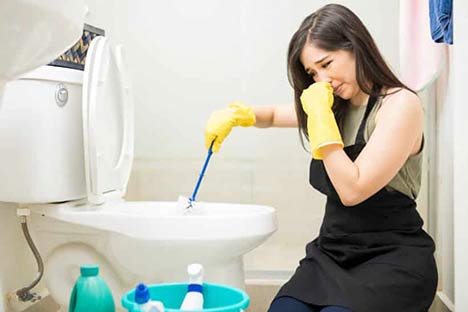
Every home, as long as it has a modern toilet, needs at least one toilet plunger. Toilet plungers are a low-cost but highly effective solution for blocked and overflowing toilets, explains Gulf Property Management. Having a plunger in your home can save you from avoidable plumbing disasters in the toilet.
However, despite their well-known ability to restore the normal flow of a blocked toilet, toilet plungers do not always work. To make a toilet plunger work for you, you must first get the right kind of plunger and learn how to use it correctly.
Using the wrong type of plunger is the number one reason a toilet plunger doesn’t work. There are four kinds of plungers but only two are important for this discussion; toilet and kitchen plungers. Toilet plungers are just a little different from kitchen plungers.
Unlike the smooth cone-shaped rubber cup of the kitchen plunger, toilet plungers come with a flange, which is why they are known as flange plungers. This flap folds out from inside the cup and its sole purpose is to ensure a tight seal inside the toilet drain.
If you are sure that you have the right kind of plunger, the next step is to make sure you are using it right. To learn how to use a toilet plunger correctly you should understand how a plunger works. Plungers function primarily based on pressure and suction.
They work by creating a tight seal around the drain opening before using the up-and-down motion to build up pressure inside the pipe. The downward motion forces air and water into the pipe, helping to loosen and dislodge the clog. The upward motion creates suction.
Pulling the plunger up causes a low-pressure area to form inside the pipe. This forces the contents of the toilet drain to move upwards. Without an airtight seal between the rim of the plunger cup and the drain opening of your toilet, the plunger will not work.
But what if the problem remains after you have done the above steps?
Plungers are only effective for removing clogs that are near the drain opening. If the clog is deep inside the drain line, your plunger will be useless to remove it. In this case, you need a more elaborate and professional solution to help clear your drains.

Plungers are only effective for removing clogs that are near the drain opening. If the clog is deep inside the drain line, your plunger will be useless to remove it.
What to do if your toilet overflows and the plunger doesn’t work
Do not flush the toilet
Your first instinct when confronted with a blocked toilet is to flush it; in hopes that if you send enough water into the drain it will eventually push the clog out. If you are lucky, flushing your toilet will indeed clear the clog. But this action can also make the problem worse by causing the toilet to overflow and spill its contents on your toilet floor. Resist the temptation to flush the toilet.
Use a drain snake
A drain snake is another DIY remedy for clearing clogged toilets. It is nothing more than a long thin tool that you insert into the toilet drain to dislodge the blockage or hook it out. Drains snakes come in many varieties and you can even make one at home with a wire clothes hanger (although it is not recommended because the sharp end of the wire can damage your pipes). To unclog the toilet, insert the drain snake and guide it into the drainpipe until it reaches the clog. Try to remove the clog by twisting the drain snake left and right.
Commonly-recommended solutions
Some recommend that you try to unclog the toilet by pouring hot water into it. Hot water may harm plastic pipes. If your toilet is overflowing you also don’t want to add more water. Another often repeated solution is using a vinegar and baking soda mix to unclog the toilet. Even if this works, it will take time and is only effective for minor clogs that can be solved with a drain snake.
Call a professional plumber
If unable to clear the clog with a plunger and drain snake, call a professional plumber. The plumber will unclog your blocked toilet with a professional drain snake (not to be confused with the simple drain snake discussed above). To make sure the problem doesn’t return, the plumber may also recommend a professional drain cleaning service known as hydro jetting.
Have your drains cleaned professionally
If a toilet clogs and overflows once, it can do it again. The best way to prevent this is to get rid of the debris within your drainpipes and sewer line that is at the root of the issue. A clogged toilet is often the remote outcome of severe buildup deep inside your sewer line. Unless you clear that debris your toilet will always be susceptible to clogs and overflows.
Always keep in mind that when dealing with toilet emergencies in your home, you cannot overlook the value of a reliable plumber. A competent local plumber knows what signs to look for when fixing problems. They can save you a lot of money by not only solving the present issue but preventing future ones.




